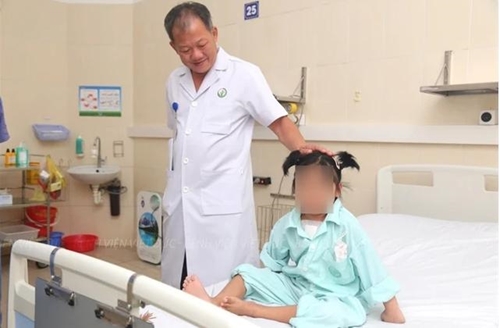This marks the 10th pediatric heart transplant performed at the hospital.
Three years ago, the patient, T.T.D.L., was diagnosed with a condition where the heart muscles became enlarged and weakened, and she subsequently received conservative treatment with specific medications at the Hanoi’s Central Pediatric Hospital.
    |
 |
|
The 7-year-old patient's body adapts to the new heart only one week after the heart transplant. (Photo courtesy of the Vietnam-Germany Friendship Hospital) |
Recently, her heart failure progressed rapidly and severely, showing poor response to conservative treatments. The child was diagnosed with end-stage heart failure, and heart transplantation was determined to be the optimal treatment option.
Heart experts at the hospital’s Cardiovascular and Thoracic Center noted that only a few cases of brain-dead organ donors are available each year nationwide, making it extremely challenging to find a suitable donor for pediatric heart transplants.
The child's end-stage heart failure caused significant breathing difficulties, requiring bed rest, and showed poor treatment response. Without a heart transplant, her chance of survival after one year was very low.
Fortunately, the patient received a heart donation from a brain-dead donor, which revived her life.
The donor's organ and the recipient's organ were a perfect match, although the donor's body size was 3.5 times larger than that of the recipient. This significant difference in body size presented numerous challenges for surgery and post-transplant recovery, posing a challenge for both domestic and international transplant centers.
At the Vietnam-Germany Friendship Hospital, with experience from nine previous pediatric heart transplants, the medical team anticipated these challenges and developed an aggressive treatment protocol for the patient.
One week after the heart transplant, the child's body began to adapt to the new heart.
After three weeks of post-surgery, the patient is recovering very well. She is engaging in daily activities, meeting the criteria for discharge from the hospital.
Source: VNA